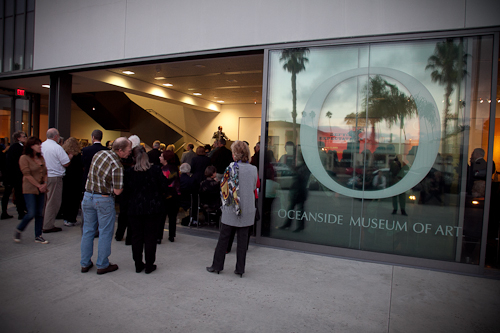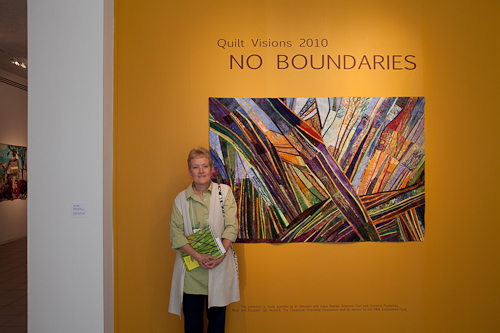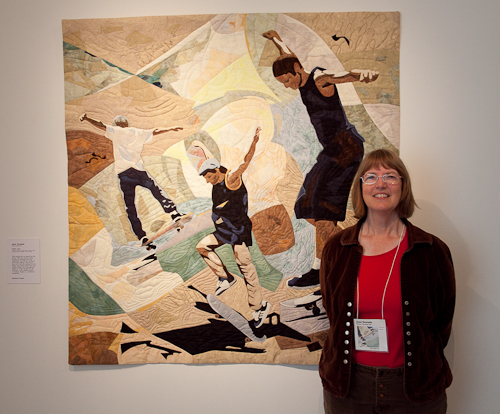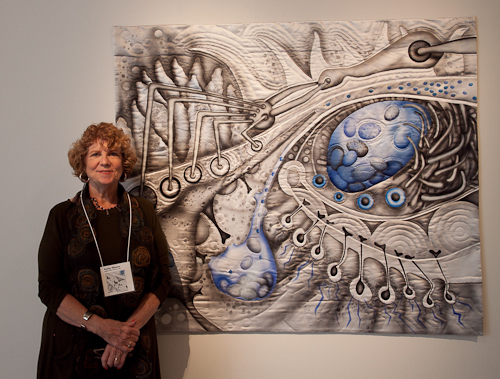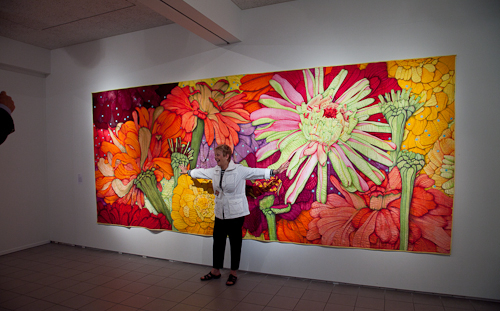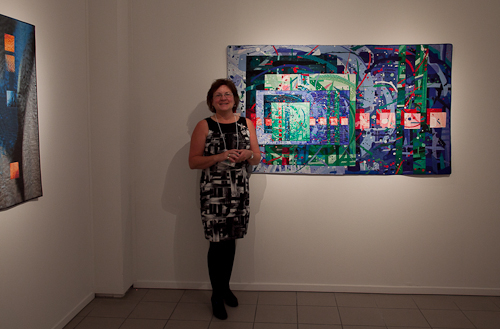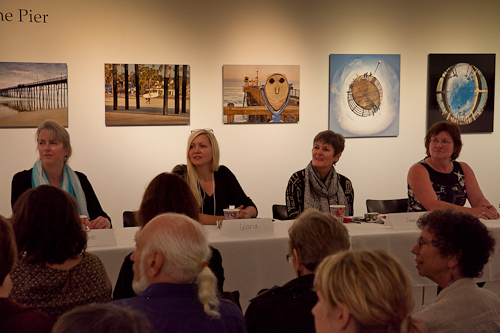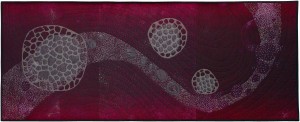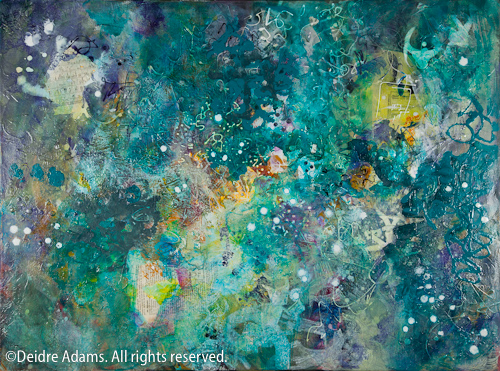Leslie Tucker Jenison
Edge of Information: A Cityscape of Paper & Cloth, 48 x 36 inches, ©2009 Leslie Tucker Jenison
Last summer, when I was in Ohio for the taping of Quilting Arts TV, I had the pleasure of meeting several artists who were also there to tape various segments on their own work. One of these was Leslie Tucker Jenison, a lovely and talented artist from San Antonio, Texas. I didn’t realize it when I met her, but after I got home, it hit me that she was the creator of Edge of Information: A Cityscape of Paper & Cloth, from SAQA‘s Creative Force exhibition, a quilt I loved so much I decided a detail of it needed a full page in the intro of the catalog.
Edge of Information: A Cityscape of Paper & Cloth (detail), ©Leslie Tucker Jenison
Intrigued by the idea behind this piece, I contacted Leslie to ask her about the work. She was very generous in sharing her process with me. The quilt is constructed of cotton/bamboo, cotton/silk, cotton broadcloth, and Lutradur. It also features various kinds of paper from books, magazines, newsprint, and shredded junk mail, all stabilized with matte medium to seal and stabilize against potential problems with acid content in the paper. She explains how her original idea was transformed during the process:
I was creating a quilt for a themed exhibition. I spent about a month using dye, soy-wax batik, screen-printing, and other surface design techniques to create many yards of cloth and paper for this quilt, thinking I was working toward an abstract winter landscape. The piece wasn’t coming together in a satisfying way, but still I pushed forward. One night, I had a dream about a very different quilt using all this cloth & paper. This had never happened to me before (or since, unfortunately!); this quilt would be a different sort of landscape: a city skyline. I dropped the other construction and began working on the piece that eventually became Edge of Information. The quilt came together very quickly once I got on track. Edge of Information: A Cityscape of Paper and Cloth is the first large piece that I created using both cloth and paper.”
Artists come to fiber art from many different backgrounds, but I think Leslie is unique in that she has been both an RN and a pilot. I asked her if either of these things provided an influence for her current work, and she said, “Without question!” Once I heard how these things relate to her work, it’s easy to see the inspiration. She says,
I love the juxtaposition of microscopic to the overt. I adore all things skeletal: I find bones to be very sculptural, with fascinating contours and negative spaces. To me, the inside of the human body is as beautiful and interesting as the outside.
I have spent many hours flying over the landscape, particularly in the midwest. Topographical details of the landscape, crop patterns, river courses, etc., have greatly influenced my quilting style.
Leslie says her best work comes from experimenting in the studio. She doesn’t plan extensively when making a piece, but she begins with an idea and allows the work to evolve while working out the details of how best to interpret and convey the subject.
Her recent large quilt, What Remains, a piece about the aftermath of the earthquake in Haiti, is another example of how she works to express the idea.
What Remains, ©2010 Leslie Tucker Jenison
The quilt was created using print media about the earthquake, laminated to polyester sheer, along with cloth created to resemble industrial-looking building materials. The base is constructed of many layers of felt and cloth to create a dimensional effect. Leslie describes her thoughts about making the work:
Specifically, I was thinking about the strata of the rubble: all the everyday items layered in between building materials. I thought about how these images are shown to us so frequently that we almost become immune to the horror of the tragedy. Then, it becomes yesterday’s news. I did a great deal of writing on this piece both by hand and sewing machine, and it’s incorporated into the quilt. The quilt is quite raw and disturbing to look at, and that was my intent.
This quilt was part of the special exhibition Beneath The Surface in Houston at the International Quilt Festival.




